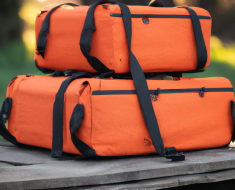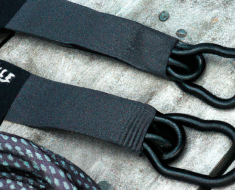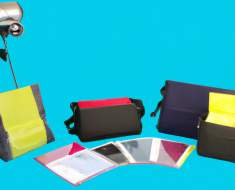Enhance your control and stability with a vertical foregrip, but be aware of added weight and potential snag hazards.
Improved Control and Stability
Vertical foregrips have become a popular accessory for firearms enthusiasts looking to improve their control and stability when shooting. These grips attach to the underside of the barrel or handguard of a rifle or shotgun, allowing the shooter to maintain a more secure grip on the weapon. While vertical foregrips offer several benefits, there are also some drawbacks to consider before adding one to your firearm.
One of the main advantages of using a vertical foregrip is the improved control it provides. By gripping the foregrip with your non-dominant hand, you can better stabilize the firearm and reduce muzzle rise during rapid fire. This can lead to more accurate and consistent shots, especially in high-stress situations where quick target acquisition is crucial.
Additionally, vertical foregrips can help reduce fatigue during extended shooting sessions. By distributing the weight of the firearm more evenly across both hands, shooters can maintain a more comfortable and steady grip for longer periods of time. This can be particularly beneficial for competitive shooters or law enforcement officers who may need to engage in prolonged shooting scenarios.
Another advantage of using a vertical foregrip is the added versatility it provides. Many foregrips come with built-in bipods or monopods, allowing shooters to quickly transition from standing to prone shooting positions without having to adjust their grip. This can be especially useful for hunters or tactical operators who need to adapt quickly to changing shooting conditions in the field.
However, there are some drawbacks to using a vertical foregrip that shooters should be aware of. One potential downside is that foregrips can add extra weight and bulk to your firearm, which may impact maneuverability and handling in tight spaces or close-quarters combat situations. Additionally, some shooters may find that a vertical foregrip interferes with their preferred shooting stance or grip, leading to discomfort or decreased accuracy.
Another consideration is that vertical foregrips may not be legal in all jurisdictions. Some states have restrictions on the use of certain firearm accessories, including vertical foregrips, so it’s important to check local laws and regulations before adding one to your weapon.
In conclusion, vertical foregrips can be a valuable tool for improving control and stability when shooting, but they also come with some potential drawbacks that shooters should consider. By weighing the pros and cons of using a vertical foregrip and taking into account your individual shooting needs and preferences, you can make an informed decision about whether this accessory is right for you. Whether you’re looking to enhance your accuracy on the range or improve your performance in tactical situations, a vertical foregrip may be just what you need to take your shooting skills to the next level.
Added Weight and Bulk
When it comes to firearms, one of the most debated accessories is the vertical foregrip. Some shooters swear by it, claiming it improves their accuracy and control, while others argue that it adds unnecessary weight and bulk to their weapon. In this article, we will explore the pros and cons of using a vertical foregrip on your firearm.
Let’s start with the pros. One of the main benefits of using a vertical foregrip is improved stability. By gripping the foregrip with your non-trigger hand, you can better control the recoil of your weapon, leading to more accurate shots. This can be especially helpful when firing in rapid succession or when shooting at long distances.
Another advantage of using a vertical foregrip is increased comfort. Holding a firearm for an extended period of time can be tiring, especially if you have a heavy or bulky weapon. The vertical foregrip provides a more ergonomic grip, allowing you to maintain control without straining your hand and wrist.
Additionally, a vertical foregrip can help with weapon retention. In high-stress situations, such as self-defense scenarios, having a firm grip on your firearm is crucial. The vertical foregrip gives you a secure hold on your weapon, reducing the risk of it being knocked out of your hand during a struggle.
However, there are also some drawbacks to using a vertical foregrip. One of the main concerns is added weight and bulk. Firearms are already heavy objects, and adding a vertical foregrip can make them even heavier. This can be a significant drawback for shooters who value mobility and maneuverability in their weapons.
Furthermore, the added bulk of a vertical foregrip can make it more challenging to store and transport your firearm. If you regularly carry your weapon in a bag or case, you may find that the foregrip sticks out awkwardly or takes up valuable space. This can be particularly problematic for shooters who need to keep their firearms concealed or compact.
Another potential downside of using a vertical foregrip is limited versatility. While the foregrip may improve stability and control in certain shooting situations, it can also restrict your range of motion and shooting positions. Some shooters find that the vertical foregrip gets in the way when shooting from unconventional angles or positions.
In conclusion, the decision to use a vertical foregrip on your firearm ultimately comes down to personal preference and shooting style. While it can provide added stability, comfort, and weapon retention benefits, it also comes with drawbacks such as added weight and bulk, limited versatility, and potential storage issues.
Before attaching a vertical foregrip to your firearm, consider how it will impact your shooting experience and whether the benefits outweigh the drawbacks for your specific needs and preferences. Ultimately, the choice is yours to make based on what works best for you as a shooter.
Enhanced Accuracy and Precision

Vertical foregrips have become a popular accessory for firearms enthusiasts looking to enhance their accuracy and precision. These grips attach to the front of a rifle or shotgun, allowing the shooter to maintain a stable grip on the weapon while aiming and firing. While vertical foregrips offer several benefits, there are also some drawbacks to consider before adding one to your firearm.
One of the primary advantages of using a vertical foregrip is improved stability. By providing a solid point of contact between the shooter’s hand and the firearm, a vertical foregrip helps reduce muzzle rise and recoil, resulting in more accurate shots. This increased stability can be especially beneficial when shooting in challenging conditions, such as from a prone position or while moving.
In addition to stability, vertical foregrips can also help shooters maintain proper hand placement on the firearm. By gripping the foregrip with their non-dominant hand, shooters can achieve a more consistent shooting position and better control over their weapon. This can lead to tighter shot groups and improved overall accuracy.
Another advantage of using a vertical foregrip is enhanced ergonomics. Many vertical foregrips are designed with ergonomics in mind, featuring contoured surfaces and textured grips that provide a comfortable and secure hold. This can help reduce hand fatigue during extended shooting sessions and allow shooters to maintain better control over their weapon for longer periods.
Despite these benefits, there are some potential drawbacks to using a vertical foregrip. One of the main concerns is added weight and bulk. Vertical foregrips can add extra weight to the front of a firearm, which may affect balance and maneuverability. Additionally, the added bulk of a vertical foregrip can make it more difficult to carry or store your weapon discreetly.
Another consideration when using a vertical foregrip is its impact on shooting technique. Some shooters find that using a vertical foregrip changes their natural point of aim or shooting posture, which can take time to adjust to. It’s important for shooters to practice with their vertical foregrip to ensure they are comfortable and confident with their new shooting setup.
In conclusion, vertical foregrips offer several benefits for shooters looking to improve their accuracy and precision. These grips provide added stability, improved hand placement, and enhanced ergonomics that can help shooters achieve tighter shot groups and better control over their weapon. However, it’s important to weigh these benefits against potential drawbacks such as added weight and bulk, as well as changes to shooting technique.
Ultimately, whether or not to use a vertical foregrip comes down to personal preference and shooting style. Some shooters may find that a vertical foregrip greatly enhances their shooting experience, while others may prefer to stick with traditional shooting techniques. Regardless of your decision, it’s important to practice with your vertical foregrip regularly to ensure you are comfortable and proficient with your chosen setup.
Limited Maneuverability in Close Quarters
Vertical foregrips have become a popular accessory for firearms enthusiasts looking to improve their shooting performance. These grips are designed to provide additional stability and control when handling a firearm, particularly in situations where accuracy is crucial. However, like any piece of equipment, vertical foregrips come with their own set of pros and cons that users should consider before making a purchase.
One of the main advantages of using a vertical foregrip is the improved stability it provides when shooting. By gripping the foregrip with your non-firing hand, you can better control the recoil of the firearm and maintain your aim on target. This can be especially helpful when shooting at longer distances or in adverse weather conditions. Additionally, the vertical orientation of the grip allows for a more natural wrist position, reducing fatigue during extended shooting sessions.
Another benefit of using a vertical foregrip is the added leverage it provides when manipulating the firearm. Whether you need to quickly transition between targets or perform reloads under pressure, having a solid grip on the forend can make these actions smoother and more efficient. This can be particularly useful in dynamic shooting scenarios where split-second decisions can mean the difference between success and failure.
However, despite these advantages, there are some drawbacks to using a vertical foregrip that users should be aware of. One of the main concerns is limited maneuverability in close quarters. The extended length of the foregrip can make it difficult to navigate tight spaces or engage targets at point-blank range. In situations where speed and agility are paramount, a vertical foregrip may hinder rather than enhance your shooting performance.
Additionally, some users find that vertical foregrips can be uncomfortable or awkward to use, especially if they have smaller hands or prefer a different shooting stance. Finding the right grip angle and position for your individual needs can take time and experimentation, which may not be practical for every shooter. It’s important to consider how comfortable and ergonomic a vertical foregrip feels in your hands before committing to using it on a regular basis.
In conclusion, the decision to use a vertical foregrip ultimately comes down to personal preference and shooting style. While these grips can offer improved stability and control when handling a firearm, they may also limit maneuverability in close quarters and require some adjustment to find the right fit for your hands. If you’re willing to put in the time and effort to master using a vertical foregrip, it can be a valuable tool for enhancing your shooting skills. However, if you prioritize speed and flexibility in your shooting technique, you may want to explore other options that offer more versatility in different scenarios. Ultimately, the choice is yours to make based on what works best for you as a shooter.
Better Recoil Management
When it comes to improving your shooting accuracy and control, one accessory that often comes to mind is the vertical foregrip. This handy attachment can be a game-changer for many shooters, but like any tool, it comes with its own set of pros and cons.
One of the main benefits of using a vertical foregrip is better recoil management. By providing an additional point of contact between your hand and the firearm, a vertical foregrip can help stabilize your weapon during rapid fire or when shooting from unconventional positions. This added stability can make a big difference in your shooting performance, especially in high-stress situations.
Another advantage of using a vertical foregrip is improved ergonomics. By adding a vertical grip to your firearm, you can create a more comfortable shooting experience by allowing for a more natural wrist angle. This can help reduce fatigue during long shooting sessions and make it easier to maintain proper shooting form.
Additionally, a vertical foregrip can also enhance your overall control over the firearm. With a solid grip on the forend of your weapon, you can more easily manipulate the firearm and make quick adjustments as needed. This can be particularly useful in dynamic shooting scenarios where split-second decisions are critical.
However, there are also some drawbacks to using a vertical foregrip that should be considered. One potential downside is added weight and bulk to your firearm. Depending on the design of the vertical foregrip, it may add extra ounces to your weapon, which could impact your ability to carry it comfortably for extended periods or maneuver it quickly in tight spaces.
Another consideration is the potential for snagging on clothing or gear. Depending on how you position your vertical foregrip on your firearm, it could catch on clothing or other equipment when transitioning between shooting positions or moving through tight spaces. This could slow you down in a critical moment or even cause a malfunction if not properly addressed.
Furthermore, some shooters may find that a vertical foregrip changes the balance of their firearm in a way that is not conducive to their shooting style. It’s important to experiment with different grip configurations to find what works best for you and your specific shooting needs.
In conclusion, using a vertical foregrip can offer significant benefits in terms of recoil management, ergonomics, and control over your firearm. However, it’s important to weigh these advantages against the potential drawbacks such as added weight and bulk, potential for snagging, and changes in firearm balance. Ultimately, the decision to use a vertical foregrip should be based on your individual preferences and shooting style. Experiment with different grip configurations and see what works best for you.






